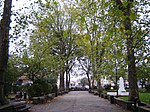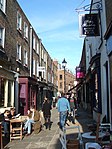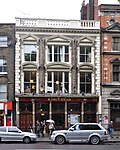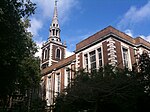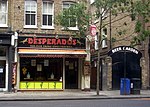Collins's Music Hall
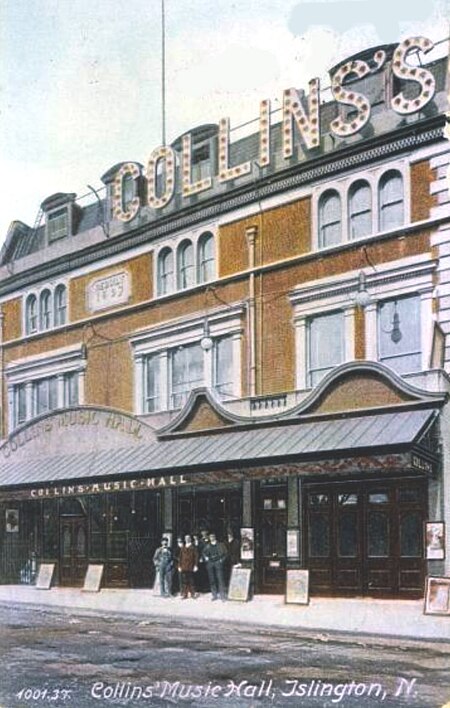
Collins's (sometimes written as Collins') was a music hall in Islington, north London. It opened in 1863, named after its original proprietor, the comedian, singer and impresario Sam Collins. He died not long after the hall opened, and after continuing under his widow and others, the hall was rebuilt and extended in 1897, with a much enlarged capacity. Collins's, like other music halls and variety theatres, declined in the years after the Second World War; it closed in 1958 after a fire. Among the performers seen at Collins's were Tom Costello, Joe Elvin, Harry Randall, Harry Tate and Bessie Wentworth. Later performers there included Wilkie Bard, George Robey, Charlie Chaplin, Gracie Fields and Tommy Trinder. The façade survived the 1958 fire and from 1994 onwards it has fronted a large bookshop built behind it.
Excerpt from the Wikipedia article Collins's Music Hall (License: CC BY-SA 3.0, Authors, Images).Collins's Music Hall
Islington Green, London Highbury (London Borough of Islington)
Geographical coordinates (GPS) Address Nearby Places Show on map
Geographical coordinates (GPS)
| Latitude | Longitude |
|---|---|
| N 51.53652 ° | E -0.10246 ° |
Address
Waterstones
Islington Green 11
N1 2XN London, Highbury (London Borough of Islington)
England, United Kingdom
Open on Google Maps

